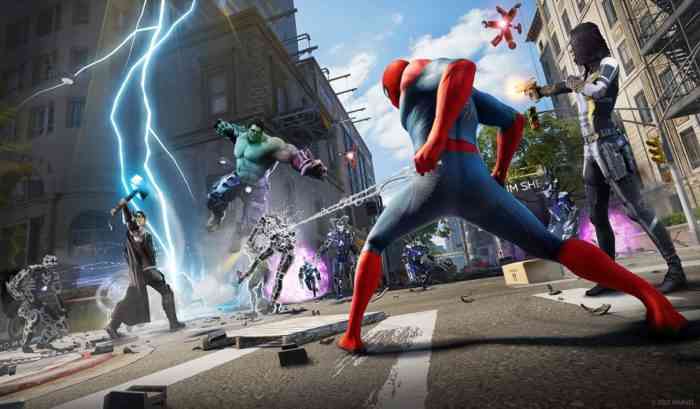Analyzing the Science Behind Fall Damage in Insomniac’s Spider-Man 2
The release of Insomniac’s Spider-Man 2 has brought a plethora of exciting new gameplay features, such as the ability to wingsuit across the New York skyline and even the option to incur fall damage if a web swing goes awry. This latter addition has sparked a longstanding debate within the Spider-Man community about whether fall damage enhances the gameplay experience and whether it makes sense given the protagonist’s superhuman abilities.
To investigate the physics of this predicament, we decided to examine the characteristics of the spiders responsible for biting Peter Parker and Miles Morales. While we couldn’t observe the spider that bit Peter due to his already-gained powers at the start of Marvel’s Spider-Man (2018), we had a close look at the genetically engineered OsCorp spider that bit Miles.
Miles’ spider is relatively small, translating to low mass and a high surface area. The relationship between these factors is crucial in determining the fall rate of an object in a non-vacuum environment where air resistance comes into play. A smaller spider, as we found, would fall at a significantly slower rate than a human body, ultimately resulting in less impact force upon hitting the ground.

According to Daniel Dombrowski, chief veterinarian and director of veterinary sciences at the North Carolina Museum of Natural Sciences, small spiders and many other small animals can fall from reasonable heights without suffering significant traumatic injuries. This is attributed to factors such as anatomy, structure, and even behavior.
Spider-Man’s abilities, like web-slinging and the wingsuit, allow him to navigate and traverse the cityscape safely. However, we explored a scenario where Spidey couldn’t utilize these talents to slow his fall.
Despite the spiders’ ability to survive large falls unscathed, it doesn’t necessarily mean that Peter and Miles would share the same resilience. They retain humanoid shape and mass similar to ordinary humans, as evidenced by their acrobatic feats and falls. Therefore, if Peter were to free fall from a towering building in the game’s digital New York, he’d hit the ground at approximately 200 km per hour.
Yet, the transformation into superheroes gave Peter and Miles superhuman strength and damage resistance. Spider web silk, for instance, can be more than five times stronger than steel wire. The question remains whether this transformation rendered them tough enough to ignore fall damage altogether, a query not easily answered in the realm of comic book characters whose abilities defy scientific explanation.